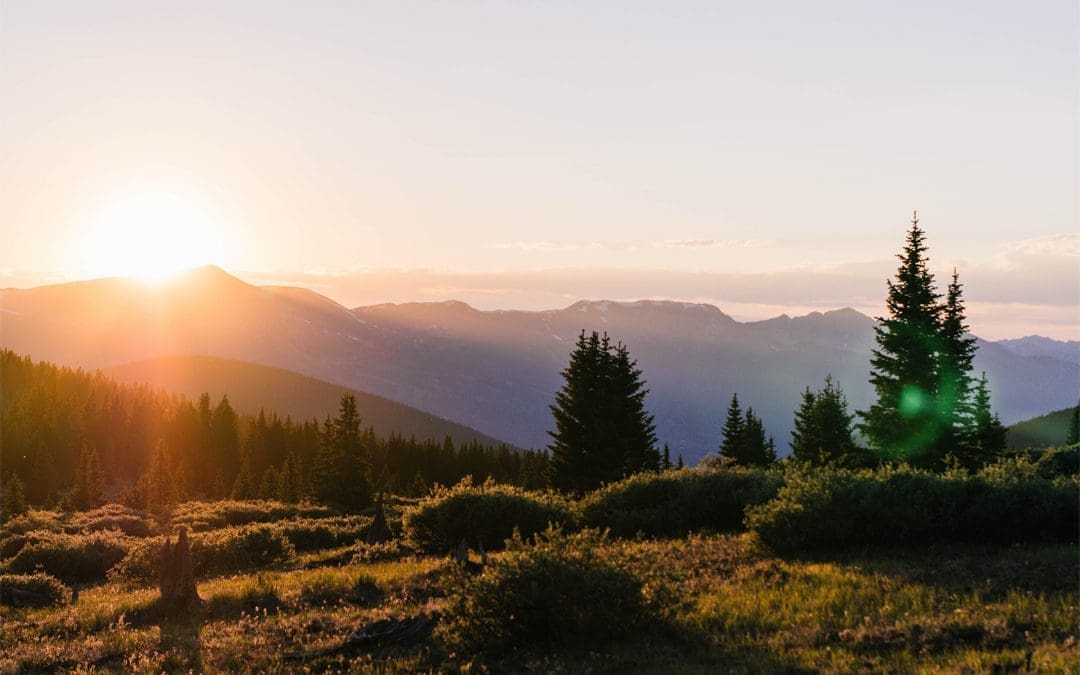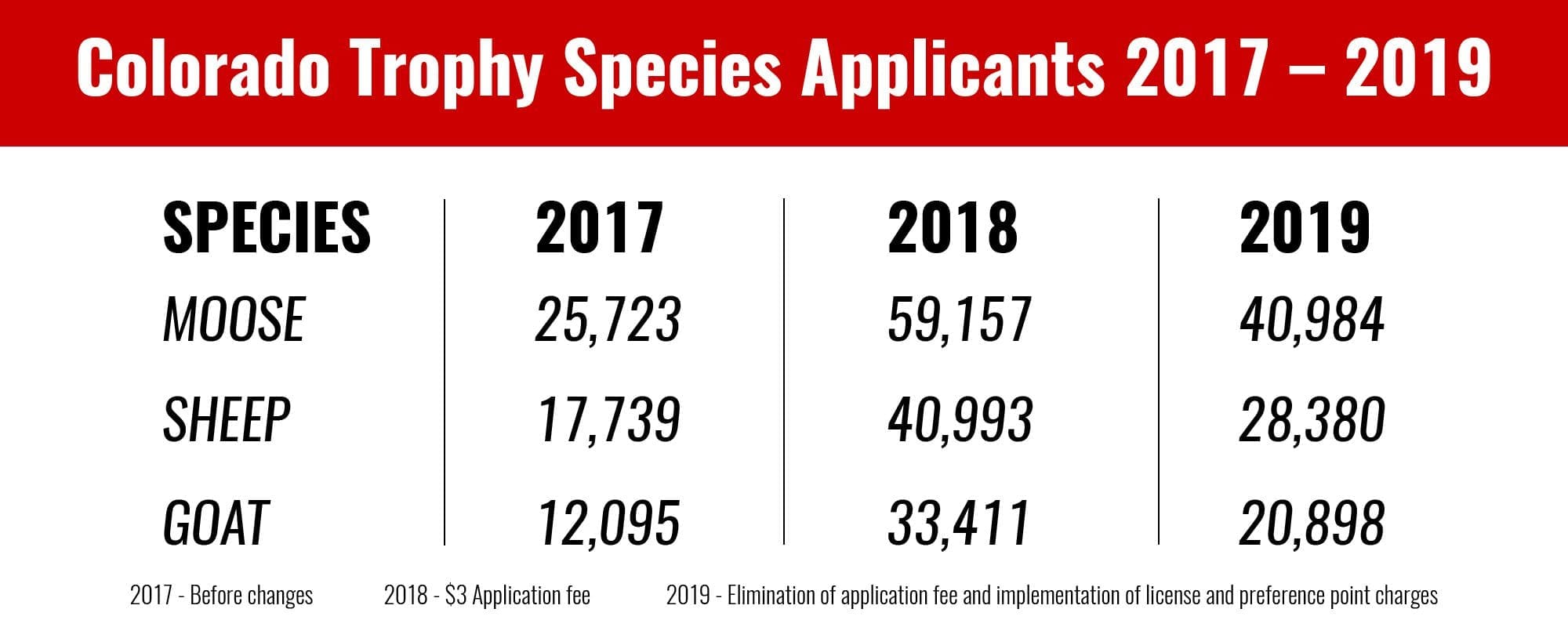
NOTICE: Certain links on this post may earn a commission for Western Hunter Magazine from Amazon or our other affiliate partners when you make a purchase. Thank you for your support.
Colorado Big Game Hunting Season Changes
Changes have been implemented for the new five-year season structure for Colorado. Season dates and other factors are evaluated every five years by Colorado Parks and Wildlife, and the results are often minor tweaks and changes to what has been a very consistent management and license allocation approach. But, with a booming economy and a growing state with a human population of 5.7 million per the 2018 U.S. Census, there have been growing concerns from wildlife managers and hunters alike of a sometimes very crowded experience for hunters, with very little recovery time between seasons for deer and elk.
In the previous two years, there have been changes to applications for the “trophy species” moose, bighorn sheep, and goat that resulted in a huge outcry of resentment by many hunters. Applications in 2018 were reduced to just $3 per species, and the applicant numbers soared exponentially.
This lasted but a brief application season when preference point fees and license purchases were now required, and the cost to apply for the three species as a non-resident was now hundreds of dollars just to gain a preference point for each animal. The result was a dramatic reduction in the number of 2018 applicants, but not to the previous levels of before the $3 application fees were implemented. This is possibly due to a lack of awareness of the 2019 changes and application services facilitating applications.
For the coming five-year season structure years, Colorado Parks and Wildlife has formulated changes for deer and elk season based on what they stated was a general consensus from meetings, focus groups, and public comment forms in which “several thousand” people gave input. The following is a synopsis of the key points of change to the major deer and elk seasons held in Colorado.
Archery
The archery hunt dates were changed to September 2nd - 30th. Effectively, this creates an opening date that doesn’t always fall on a Saturday and end on a Sunday. This also will impact early mule deer archery hunters as there will be less time to hunt patternable bucks in velvet. On the other hand, this season does push out an extra few days at the end of September potentially allowing for more rut hunting of elk.All deer licenses are limited and allocated by quotas, but OTC (Over-The-Counter) elk licenses are still going to be available in much of Colorado.
Muzzleloader
No changes were made, with the season still opening the second Saturday in September and lasting for nine days. Note: Muzzleloader hunters must meet the state blaze orange requirements, but the archery hunter standing right next to you can wear camo during this season.
1st Season Rifle Elk
There is no substantive change to this season. The season is still five days long, starting the first Saturday in October after October 9th. There is no deer hunt offered concurrently with this season, and there will now be a nine-day break between 1st and 2nd rifle seasons, as opposed to the previous two-day break.
2nd Season Rifle Elk & Deer
The nine-day break between 1st and 2nd season will push the 2nd season back a week later than it has previously been held, and will be somewhat effective in creating some settling down of deer and elk herds between seasons. For opening day elk hunters, this will potentially allow for greater success in the second season, but the herds will quickly adjust, and success rates will drop as this nine-day season drags on. One benefit to this season for residents and those hunting with school-age children is that it allows for two full weekends of hunting.
3rd Season Rifle Elk & Deer
The 3rd rifle season is set to begin five days after the end of the second season, and will now run for only seven days instead of the previous nine days. The nine-day break between the 1st and 2nd seasons effectively created a week later start date of the new 3rd season. This should increase the chance of mule deer bucks starting to exhibit rut activity, especially in the more northern aspects of the state. This fact is not lost on wildlife managers, and they expect to see tags reduced in many units to compensate for the potential increased vulnerability the rut and snow create. Later season hunts for elk can have a tendency to reduce hunter success as opposed to boost it for mule deer, simply because snow makes hunting conditions and access more challenging for areas that elk inhabit in late fall. Elk will adjust to deepening snow cover in a way that mule deer don’t, and when mule deer move to lower country with better visibility and access, elk will often stay put.
4th Season Rifle Elk & Deer
The new season structure is now pushing the 4th season back into Thanksgiving week, with the earliest opening date being November 18, 2020, and the latest being November 24, 2021 over the next five-year season structure. This will be a full blown rut hunt for mule deer, so expect tag allocations to be very conservative. Even in non-traditional big buck units, the dates will allow access to big rutting mule deer at a season date that we have not seen since the ‘60s.
Big mule deer will be completely dumbed up in hormone-charged rut behavior, and this hunt will prove to produce whopper bucks from all over the state. Expect hunters with piles of points to cash them in, with hopes and dreams of giant black-antlered bucks filling pickup beds. Tags were difficult enough to draw in the past for 4th season, and these dates of this late season with almost auction-tag-like access to bucks will definitely create the need for pretty strict tag numbers.

Going Forward
Time will tell what impact these new dates will have on mule deer hunting in Colorado. Chronic Wasting Disease has been a high priority item for Colorado Parks and Wildlife managers, and tag numbers have been increased in an effort to create a higher buck harvest in areas with CWD prevalence. The theory is to reduce the number of older age class deer which roam substantially more from doe group to doe group, potentially spreading the disease. Between this management approach and the later rut hunts, expect a serious lack of mature mule deer bucks in many areas now, and in years to come. While the late dates might cause some temporary excitement for those hoping for and wanting to draw licenses, the impact of the type of hunts will have a lasting effect.
Expect the 2nd season to be a pretty crowded experience in the mountains of Colorado. Two weekends combined with the greatest number of days and a late October time frame is a very appealing proposition for many hunters. The laws of unintended consequences are sure to come into play with this new season structure, so expect substantial changes from Colorado Parks and Wildlife five years from now in reaction to the new dates and the issues they create.
With the success of the high preference point charges for the trophy species, the writing is on the wall for preference point fees possibly being considered for deer, elk, and antelope. And to think – we haven’t even talked about the ballot initiative for 2020 on wolf reintroduction or the proposed legislation mandating it if the vote fails.


